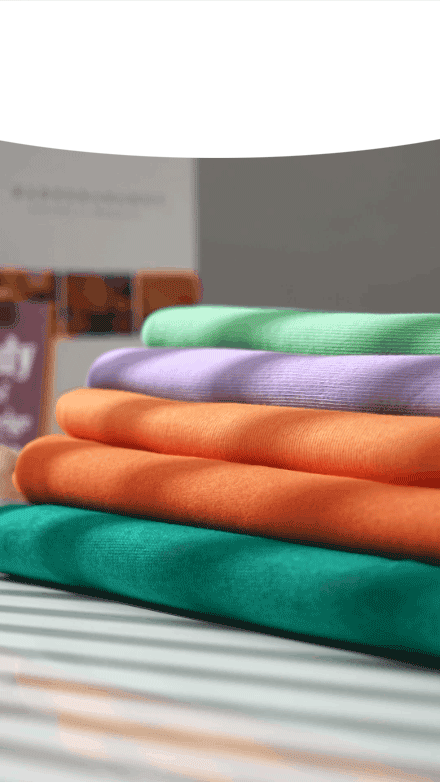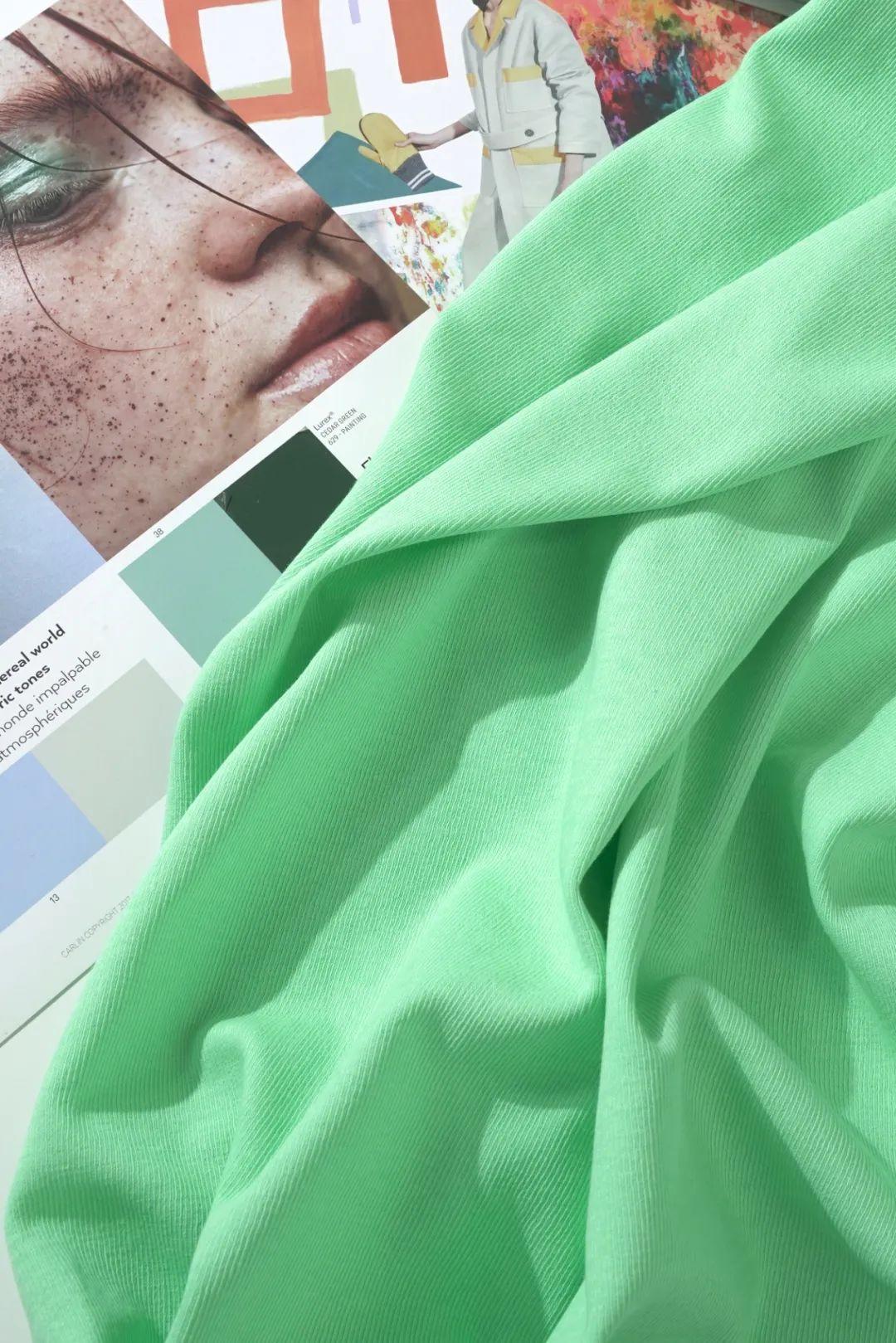Sweatshirts are the most suitable item for autumn and winter because they look casual and fashionable. Autumn and winter are also the best seasons to buy sweatshirts. When we develop sweatshirts, in addition to paying attention to the style of the clothes, we must also pay attention to the quality of the clothes. Learn this knowledge and earn more repeat customers and good reputation!
Let’s first learn about sweatshirt fabric
Sweatshirt fabric
Sweatshirt fabric is a kind of knitted fabric. French in English
terry,
After pulling the hair, it is called fleece. This type of knitted fabric is mostly made of displacement yarn, so it is called displacement fabric or sweatshirt fabric. In some places it is called terry cloth, and in other places it is called fish scale cloth. There are many varieties. (Fish scale cloth is named because the back of the cloth is terry cloth, and some of them look like fish scales.) The weight is generally 190g/M2 -350g/M2.

Can be divided into:
1. Generally, those weighing less than 250g are called small sweatshirts in the market, some people call them sweatshirts, and some people call them single sweatshirts. Because they are woven from a single yarn, relative to this variety, Relatively thin. The loops of small sweatshirts are smaller, called small terry cloth
2. Those weighing more than 280g are called big sweaters in the market. Some people also call it double sweatshirt, because it is woven from two or even three yarns, so this kind of cloth is relatively thick. The loops of the David’s coat are obviously larger, so people call them big loops.
On the terry surface on the back side, you can also scratch the hair. Some people say brushing, others say it is called brushing. Painting hair also has the same meaning as pulling hair, but it is called differently in different places. This kind of fleece fleece will be thicker and warmer than the original terry cloth without fleece. This kind of cloth is generally around 280g-320g.

Can be divided into:
1. Cotton (100% cotton)
2. CVC (cotton-polyester, containing more than 60% cotton)
3. TC/AB (containing about 30% cotton)
4. Polyester (100% polyester)
If they are made of the above four ingredients, then these sweatshirts are not elastic. Stretchy sweatshirts are made with spandex, that is, pure cotton, CVC, TC/AB, and pure polyester are basically made with spandex added (market name: stretch/densified). After adding this, the fabric of the sweatshirt becomes elastic. , the spandex component generally accounts for 5% of the entire cloth.

Sweatshirts/terry cloth/fish scale cloth with spandex added can be divided into
1.Cotton stretch pullover sweatshirt/terry cloth/fish scale cloth
2.CVC stretch pullover sweatshirt/wool Hoop cloth/fish scale cloth
3. TC/AB stretch pullover sweatshirt/terry cloth/fish scale cloth
4. Full polyester stretch pullover sweatshirt/terry cloth/fish scale cloth
p>
However, pilling on sweatshirts is a very annoying problem. After all, when clothes pill, they will look very cheap and very low-grade. And wearing it can also cause a bad mood.
I believe we have encountered this situation in our daily lives.

Why do clothes pill?
There are three main reasons for fabric pilling:
1. Pilling characteristics of fabric.
Different fabrics have different pilling difficulties. The fiber properties have different effects on the fabric. Balling has a great influence, and fiber length, fineness, shape and surface properties also have a great relationship with fabric pilling. In contrast, fine fibers are easier to pill than coarse fibers, and blended fibers are easier to pill than other fibers.
2. Friction and electrostatic pilling.
Some chemical fibers have poor hygroscopicity and are prone to generate static electricity during drying and continuous friction. The hairiness on the surface of the short fiber fabric is made to stand upright, thus creating conditions for pilling. For example, the static electricity of polyester can easily attract foreign particles and cause pilling.
3. Improper pilling during washing.
Washing for too long can easily cause fabric fiber damage, fiber breakage, and increased pilling. Possibility: The washing temperature is too high (suitable temperature is 20-45 degrees), the detergent is wrong (neutral detergent is recommended), etc. may cause pilling.

The necessary condition for pilling is that the fiber must have enough strength to support pilling. Cotton and fine wool break and fall off during the pilling stage, and there is very little chance of pilling. Chemical fibers are different. Polyester or acrylic fibers are very easy to pill. Stubborn, pilling first, then pilling, and then you have to cut the pilling. Pilling of clothes is affected by the characteristics of the fabric and cannot be avoided, but the degree can be controlled. Fine fibers are easier to pill than thick fibers, and blended fibers are easier to pill than other fibers. For example, a garment made of a blend of chemical fiber and cotton fiber is more likely to pill than a garment made of pure cotton.
Solution
Basically The best solution is to choose clothes that are not prone to pilling when purchasing sweatshirt fabrics, such as clothes made of natural fiber fabrics, such as pure cotton, silk, cashmere, etc. Pure natural wool is the best, but The price will be more expensive, and the warmth and softness will be higher.
Pure cotton sweatshirts have a better feel and texture It also looks better, is comfortable to wear, very soft, and also very sweat-absorbent.


These sweatshirt cleaning and maintenance tips
Remember to remind customers~
General cleaning:
The washing water temperature should not be higher than 25 degrees. It is best to wash with cold water. Be sure to Hand wash. Try to use neutral detergent for cleaning. If you find it difficult to remove residues of detergent, you can put some vinegar in the water, so that you can easily remove stains. When washing, do not scrub the collar and cuffs too vigorously to avoid deformation of the collar and cuffs.
Print cleaning:
Print objects should not be soaked in water for too long. Rub the surface of the sweatshirt pattern with your hands. Do not wash it with detergent containing bleach. Try to use a more neutral detergent for cleaning. All printed items should not be washed in a washing machine as much as possible. It is recommended to wash them by hand. If the printed pattern on the clothing is stained, please soak it in washing powder and water for a few minutes, and then clean it with a brush (soft-bristled brush is best). It is not advisable to brush hard to avoid damaging the fabric fibers and affecting the brilliance of the printed pattern. Printed objects cannot come into contact with solvents, acids, alkali, oil and other corrosive substances.
Drying method:
1. After washing, the clothes should be dried naturally and gently squeezed with water. good. Do not wring it with your hands, do not spin it in a clothes dryer, and printed items should not be bleached or dried.
2. If the clothes need to be ironed, use medium-temperature steam to iron them after drying, and try to avoid the pattern part with the iron. If the pattern needs to be ironed, the temperature of the iron should not be higher than 80 degrees. Please do not place the iron directly on the pattern. It is best to block a piece of cloth in the middle before ironing.
Collection skills:
1. When putting away clothes after washing, do not It fits into a narrow space and can be hung on a hanger or spread flat to keep the clothes in a flat shape.
2. It is best to hang the clothes on hangers in the wardrobe, or fold the clothes and put them in the cabinet.







